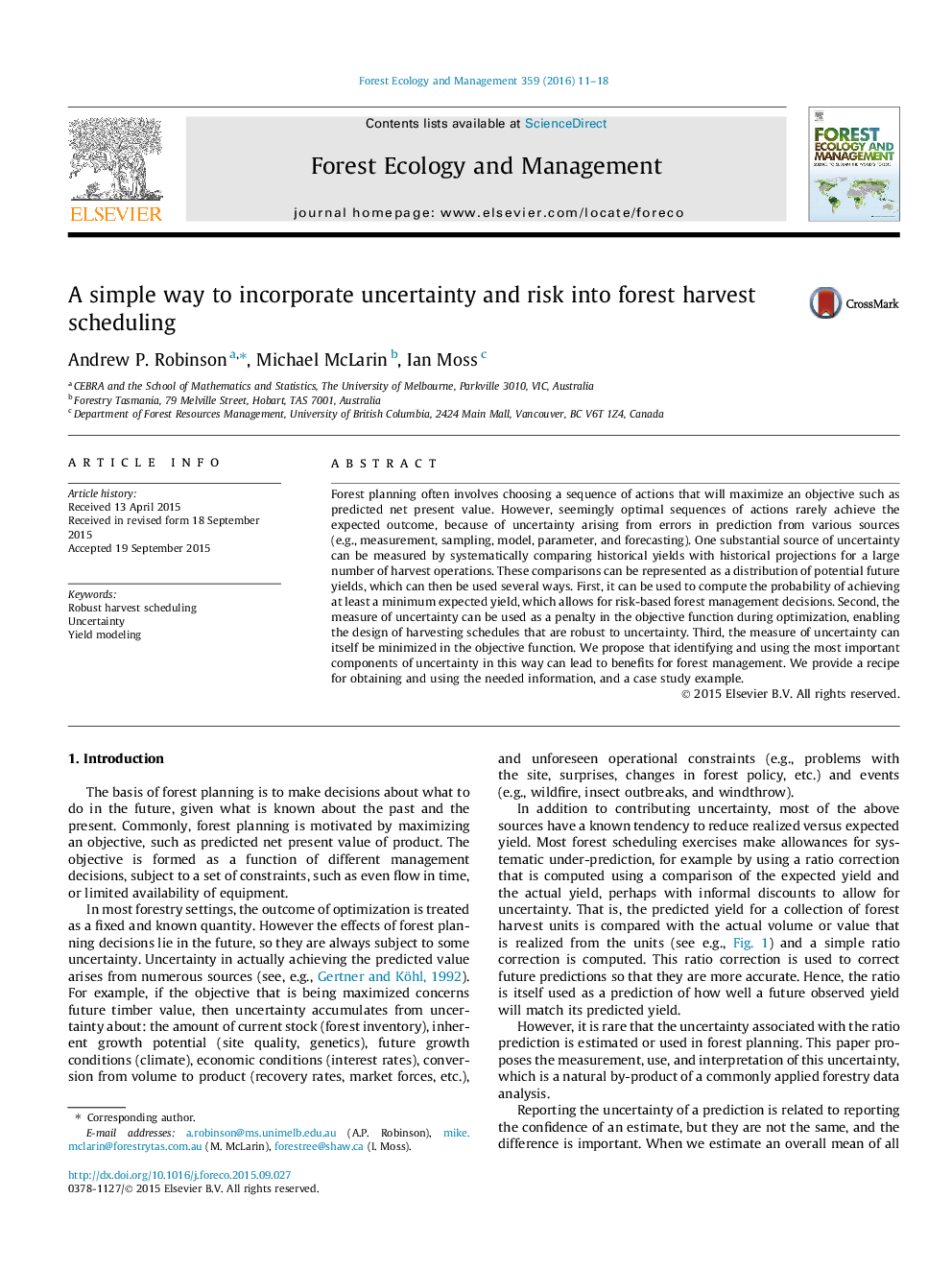| Article ID | Journal | Published Year | Pages | File Type |
|---|---|---|---|---|
| 6542612 | Forest Ecology and Management | 2016 | 8 Pages |
Abstract
Forest planning often involves choosing a sequence of actions that will maximize an objective such as predicted net present value. However, seemingly optimal sequences of actions rarely achieve the expected outcome, because of uncertainty arising from errors in prediction from various sources (e.g., measurement, sampling, model, parameter, and forecasting). One substantial source of uncertainty can be measured by systematically comparing historical yields with historical projections for a large number of harvest operations. These comparisons can be represented as a distribution of potential future yields, which can then be used several ways. First, it can be used to compute the probability of achieving at least a minimum expected yield, which allows for risk-based forest management decisions. Second, the measure of uncertainty can be used as a penalty in the objective function during optimization, enabling the design of harvesting schedules that are robust to uncertainty. Third, the measure of uncertainty can itself be minimized in the objective function. We propose that identifying and using the most important components of uncertainty in this way can lead to benefits for forest management. We provide a recipe for obtaining and using the needed information, and a case study example.
Keywords
Related Topics
Life Sciences
Agricultural and Biological Sciences
Ecology, Evolution, Behavior and Systematics
Authors
Andrew P. Robinson, Michael McLarin, Ian Moss,
